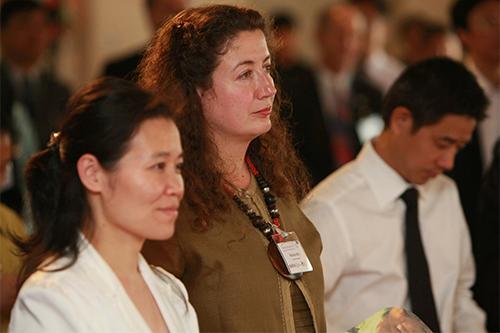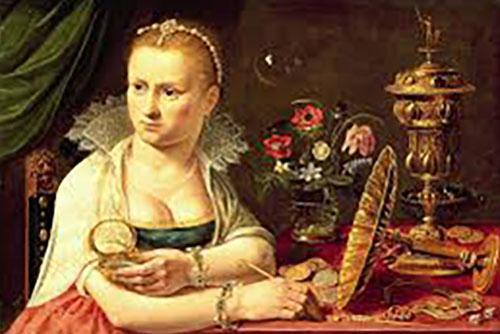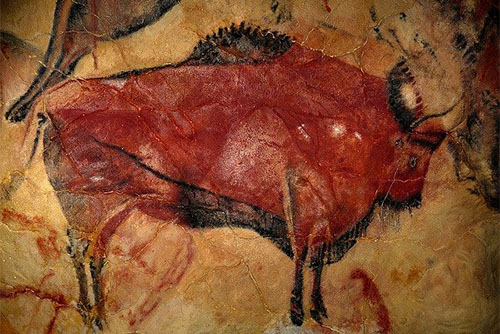From cave paintings to CGI - the undiscovered universe of how we see the world and learn from it
Academic’s interests include healthcare, visual perception and nurturing future talent
Marina Bloj is Professor of Visual Perception at the University of Bradford and as such her work focuses on how our eyes and brains process information about the world around us. It’s a field with a surprisingly wide array of applications, from making computer games feel more realistic and improving CGI in movies to creating ‘vision systems’ for driverless cars and automating some aspects of farming.
But her interests extend well beyond her chosen field of expertise. For 10 years, she was Partner and Lead Governor at the Bradford Teaching Hospitals NHS Foundation Trust. Marina is now Associate Dean for Research and Innovation in the Faculty of Health Studies (after having held the same role for 5 years in the Faculty of Life Sciences) and remains passionate about encouraging emerging talent and enabling academic growth among colleagues.

Her eclectic interests can perhaps be traced back to her “culturally rich” childhood. An only child, she was born and grew up in Argentina. Her mother, Miriam Pereyra Ramos de Bloj, was an artist - she fondly recalls her home being “surrounded by art” - while her father, Bernabe Bloj, was a biochemist and scientist.
“Both my parents were tremendously strong inspirations in terms of having that curiosity and vision and understanding about the world. They encouraged and supported me.”
She describes her formative years as peripatetic, moving to the US aged four before returning to Argentina at 14, where she finished her secondary schooling, after which she travelled to the UK, completing a masters and PhD in neuroscience at The University of Newcastle University in her late 20s, incidentally producing the first piece of research into how the shape of an object can influence colour perception. She came to Bradford in late 2000, from where she has developed all her independent academic career.
She says: “The University of Bradford has been very supportive of my work and I have been very lucky in that I have been able to teach my first love - optics, how light and vision work, optometry and vision science - to undergraduates. I’m interested in the information that comes from the eye and how that combines with our prior understanding of things, memory and expectation to produce this whole visual experience.” While it was her father’s zeal for science which inspired her to take up physics, her mother’s love of art has also undoubtedly fed into her various passions and there’s something almost elemental about her approach.
“If you look at classical painting over the last five centuries and think about how art has been able to portray materials… when you look at a painting, you can tell if something is velvet or gold or satin or silk or made from China and all the painter had was a couple of oil colours and a flat surface. So what is it that the brain does to tell us that?”

Marina remarks that various artistic influences include :

"Go back even further, to cave paintings, where they had just one colour and a finger and you can still look at those images and see they were drawing a bison, for example, and you can see fur and texture and movement".

“I am interested in examining how the eye and brain work together. This can lead to understanding how things go wrong and when they do, how to correct them, which then feeds into synthetic vision for things like driverless cars.”
The practical implications of her work, especially in relation to popular culture, are impressively showcased on the Substance 3D website, which boasts a superabundance of blockbuster films and TV series such as Spiderman, Game of Thrones, Frozen II and First Man and computer games.
Marina works in partnership with the DyViTo (Dynamics in Vision and Touch) Project, which she leads. Its work focuses on perception, sensory integration and the ‘interactive rendering of virtual visual-haptic objects’. The partnership, which among other things aims to analyse ‘perception using advanced computational simulations’, began in 2016 is due to complete in 2022.
“In the DyViTo project, we are looking at what cues make a material appear old and worn. What are the things which make you think a material has been outside for a long time? Humans do this instinctively but it’s harder to get a machine to do that. If you start with things which are less shiny or have scratches, you can always find an exception. So we’re looking at what other parameters are used to make these classifications and then at ways of incorporating those into artificial vision systems.”
“If you think of the computer gaming industry, they might want to create a Mayan temple. Some of that is automated but the work of digital artists remains more realistic. Our research would help improve the algorithms people use to make those graphics.”
Marina’s work has application beyond the entertainment industry, edging into advertising, product design and even farming, because once machines can tell whether crops are ripe or unripe, the cost-savings of automation beckon.
Advancements in CGI have created a new ethical awareness and the idea that things are becoming so realistic, there’s a chance they could be abused by criminals.
She admits she has a problem with a lot of animated films, in particular their “terrible” representation of hair, skin and fur but adds that for her, the high point of a film like Toy Story 4 was not the storyline but the step change in the integration of light and shadow, because: “Once you become aware of something, it bugs you and the illusion is broken.”
Speaking of illusions, she offers a wealth of examples which still fool humans, whether that’s picking up an empty box you thought was full of books and then falling backwards or looking at a set of footprints in the sand and then rotating the picture only to watch them appear in relief.
There is something of an illusion too about Marina, in that what you see is not always all you get. It would be a mistake to pigeonhole her as an academic with a single pursuit. Like her childhood, her interests seem to roam far and wide. Since moving to Bradford, she has taken an active interest in its community, sitting on the board at Bradford Teaching Hospitals NHS Trust for a decade, where she was involved in research to promote better outcomes for people in terms of public health and wellbeing and the creation of so-called ‘compassionate communities’, which includes promoting support networks, aftercare for those leaving hospital and a more ‘people-centred’ approach to healthcare.
“There is evidence to say simple things like asking people if they want to join a knitting group or zumba class ultimately results in reduced A&E admissions, which is the Holy Grail of public health.
As if that wasn’t enough to keep her busy, she is passionate about mentoring, adding: “I was lucky to have a lot of mentors at different stages of my life who have been generous with their time and knowledge, willing to listen and push you in different directions and that’s what I try to do now. I have a lot of people come visit the lab. I also work with a lot of colleagues within the university to help people develop their knowledge.”
“In all these projects, I tend to have a big network and I enjoy pulling people together from different disciplines. I just love working with people who are smarter than me in different areas. That’s a joy.”
